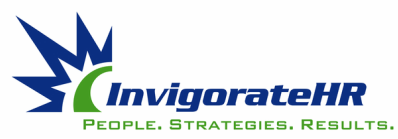 By now you probably already heard that the U.S. Citizenship and Immigration Services (USCIS) published a new version of the Form I-9. Beginning on September 18, 2017, employers are required to start using the revised form with a revision date of 07/17/17 N and continue to follow existing storage and retention rules for any previously completed Form I-9. While the changes are subtle, failure to comply by the September 18 deadline, or the Immigration and Nationality Act (INA) in general, can be costly to your bottom line. This was recently illustrated in the case DLS Precision Fab LLC v. U.S. Immigration & Customs Enforcement, 2017 WL 3378997. I-9 Changes Overview[1]: Revisions to the Form 1-9 instructions:
Lesson of a Rouge HR Director and Noncompliance:
DLS, a company in Arizona, is in the business of providing custom sheet metal fabrication. In the late 2000s, it experienced an expansion in labor force growing to about 200 employees. To deal with its larger workforce and ensure compliance with employment laws, DLS hired a well-credentialed human resource director. DLS would later discover that this individual shirked his responsibility to ensure the company’s compliance to the point “of literally stuffing the government’s correspondence in a drawer and never responding.” In 2009, DLS received notice of inspection from United States Immigration and Customs Enforcement (ICE). After reviewing DLS’s I-9 forms, ICE served notice of intent to fine. After requesting a hearing before an Administrative Law Judge (ALJ), ICE moved for summary decision as to liability for all six counts it filed against DLS. The ALJ granted ICE’s motion finding DLS liable for 504 of the 508 alleged violations (489 of which were I-9 paperwork violations and 15 involving continuation of employment of ineligible aliens), and assessed a civil penalty of $305,050. DLS petitioned the Ninth Circuit for review of the ALJ’s decision arguing that the “peculiar facts of this case” justify extending the good faith defense to substantive violations, because it attempted to comply by hiring an HR director. The court was not convinced and stated: DLS is not the first employer to hire an employee with the expectation that he or she will comply with the law only to be disappointed, nor is it likely to be the last. More broadly, DLS asks us to disregard the company’s responsibility for hiring and supervising its own employees. The HR director was acting as DLS’s agent, and his failure to perform his responsibilities may properly be imputed to DLS. The Ninth Circuit denied the company’s petition to review the ALJ’s conclusions, with the exception of finding one of the 504 violations as untimely under the applicable statute of limitations. Compliance with the INA, while tedious, is important and failure to abide by the subtle nuances can mean significant fines. The above case not only demonstrates this but also highlights the importance to having processes in place and the need for regular audits. Therefore, it is recommended that you secure an HR partner and utilize the right expertise to keep you compliant and to avoid legal action. [1] https://www.uscis.gov/i-9-central/whats-new Comments are closed.
|
Archives
December 2024
|

 RSS Feed
RSS Feed